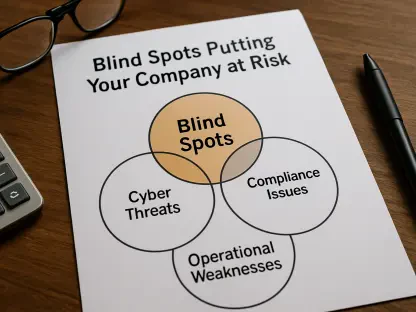Modern border security is a complex and multifaceted issue that requires a comprehensive and adaptive approach. The PCCR (Prevention, Containment, Concretion, and Reaction) model offers a sophisticated framework to address these challenges effectively. This article delves into the intricacies of the PCCR model, exploring how each phase contributes to a cohesive border security strategy. By understanding and addressing the interconnected nature of migration and security, the PCCR model provides a holistic approach to modern border security challenges.
Overview of the PCCR Model
Understanding the PCCR Model
The PCCR model consists of four phases: Prevention, Containment, Concretion, and Reaction. Each phase builds upon the preceding one to create a cohesive strategy for border security and migration management. This model’s strength lies in its flexibility and comprehensiveness, ensuring that various aspects of migration and security are addressed systematically. By integrating thorough risk assessments, strategic planning, and immediate response capabilities, the PCCR model is designed to anticipate and mitigate migration-related issues from multiple dimensions.
Addressing modern border security challenges requires acknowledging that threats and crises evolve continuously. The PCCR model accounts for this by being adaptable and forward-thinking. It recognizes the necessity of not just preventing crises but also having robust frameworks in place to contain and react to emerging threats. This model essentially creates a security net that continually adapts and strengthens as more data becomes available and new strategies are devised, ensuring that border security remains resilient in the face of dynamic and multifaceted threats.
Addressing Transversal Threats
Transversal threats, such as irregular migration and transnational criminal networks, transcend national borders and sectors, impacting security, social cohesion, and economic stability. These threats weaken perceptions of state sovereignty and generate political, social, and economic tensions. The PCCR model addresses these threats through a comprehensive and coordinated approach that involves all relevant stakeholders. This model not only focuses on immediate issues but also considers long-term impacts and strategies to mitigate them.
By addressing such comprehensive threats, the PCCR model ensures that all aspects of border security are covered, including human trafficking, drug smuggling, and other illegal activities often linked to irregular migration. The model’s emphasis on collaboration with international partners and regional organizations helps create a united front against these threats. Through shared intelligence and combined resources, countries can better manage their borders and improve overall security and stability. The model’s holistic approach thus helps maintain state sovereignty while promoting regional and global security.
The Prevention Phase
Root Causes of Migration
The Prevention phase focuses on understanding and addressing the root causes of migration, such as poverty, violence, and political instability. By anticipating and mitigating risks from their earliest stages, this phase aims to reduce the push factors that drive migration. Effective prevention strategies recognize that migration is often a symptom of broader socio-economic and political issues. Therefore, addressing these underlying problems is crucial to effectively managing migration flows. This phase involves investment in development programs, diplomatic efforts, and international cooperation to stabilize regions prone to high migration rates.
Understanding the root causes of migration requires detailed analyses and comprehensive data collection to identify areas in need of intervention. Governments and organizations can then tailor their approaches to the specific needs of different regions, ensuring that prevention strategies are relevant and effective. For example, initiatives that create economic opportunities, improve governance, and enhance security in migrants’ home countries can significantly reduce the pressures that lead to irregular migration. By tackling these root causes, the Prevention phase lays the foundation for a more sustainable and humane migration management system.
Anticipating Risks
Effective prevention requires rigorous planning, risk assessments, and targeted actions. By identifying potential threats early, states can implement measures to address them before they escalate into crises. This proactive approach is essential for maintaining border security and stability. Anticipating risks involves continuous monitoring of geopolitical developments, social trends, and economic conditions that could lead to increased migration pressures. Early warning systems and predictive analytics play a vital role in identifying and mitigating potential threats.
Developing robust risk assessment frameworks allows governments to allocate resources more efficiently and implement targeted measures that address specific issues. This could include strengthening border patrols, enhancing surveillance technologies, and increasing cooperation with international partners to share intelligence and best practices. By staying ahead of potential crises, states can prevent chaotic and unmanageable migration flows, which often lead to security concerns and humanitarian tragedies. This forward-thinking and data-driven approach is fundamental to the PCCR model’s success in managing modern border security challenges.
The Containment Phase
Limiting the Impact of Emerging Crises
The Containment phase emphasizes limiting the impact of emerging crises through rapid and effective responses. This involves combining rigorous planning, risk assessments, and targeted actions to manage crises as they arise. Containment strategies are designed to prevent localized issues from escalating into broader regional or national crises. This phase relies on high levels of coordination among various agencies, including law enforcement, border control, and emergency services, to ensure a swift and unified response.
By limiting the immediate impact of a crisis, the containment phase buys time for longer-term solutions to be implemented. It involves deploying resources quickly to areas of emerging concern, reinforcing border security measures, and providing humanitarian assistance to those affected. This phase also includes public communication strategies to inform and reassure citizens, reducing panic and maintaining public order. By containing crises effectively, the PCCR model minimizes the potential for disruption and maintains stability while longer-term strategies are put in place.
Rapid Response Mechanisms
Rapid response mechanisms are crucial for containing crises. By deploying resources quickly and efficiently, states can mitigate the impact of crises and prevent them from escalating. This phase also involves interagency coordination and collaboration with international partners to ensure a comprehensive response. Rapid response units must be well-trained and equipped to handle a variety of scenarios, including large influxes of migrants, public health emergencies, and heightened security threats.
Effective rapid response mechanisms require clear protocols and a chain of command to enable swift decision-making and action. These mechanisms should be regularly tested through simulations and drills to ensure readiness and efficiency. Additionally, maintaining a pool of personnel and resources that can be mobilized at short notice is essential for a robust rapid response capability. Interagency and international collaboration are also crucial for sharing resources, expertise, and information, ensuring that responses are well-coordinated and effective across all levels of government and among partner nations.
The Concretion Phase
From Policy to Action
The Concretion phase translates strategic policies into operational actions to address immediate needs and strengthen institutional capacity. This phase involves implementation planning, resource management, interagency coordination, and monitoring and evaluation systems. Implementation planning ensures that the strategies developed in the Prevention and Containment phases are executed effectively, with clear objectives and timelines. Resource management is critical for ensuring that the necessary financial, human, and material resources are available and utilized efficiently.
Interagency coordination is essential for the successful implementation of border security measures. Different agencies, including immigration, law enforcement, and intelligence, must work together seamlessly to achieve common goals. Monitoring and evaluation systems track the impact of these measures and provide feedback for continuous improvement. By translating policy into action, the Concretion phase ensures that strategies are not just theoretical but are practically applied to enhance border security and manage migration effectively.
Decentralized Approach
A decentralized approach allows local authorities to adapt national policies to specific realities, ensuring applicability and consistency at the national level. This approach enhances the effectiveness of border security measures and promotes local ownership of the process. Local authorities are often better positioned to understand and respond to the unique challenges and dynamics in their regions. By empowering them to tailor national policies to local conditions, the Concretion phase ensures that border security measures are more relevant and effective.
Decentralization also promotes flexibility and innovation in border security strategies. Local authorities can pilot new approaches and share their successes and challenges with national authorities and other regions, fostering a culture of continuous improvement. This approach also enhances accountability and transparency, as local governments are directly responsible for implementing and managing border security measures. By involving local stakeholders in the process, the PCCR model ensures a more inclusive and comprehensive approach to border security and migration management.
Monitoring and Evaluation
Establishing systems to measure policy impact and adjust strategies based on data enhances efficiency and public trust in institutions. Monitoring and evaluation are essential for ensuring that policies are effective and responsive to changing circumstances. These systems provide valuable insights into the strengths and weaknesses of current strategies, enabling continuous improvement and adaptation. By tracking key performance indicators and assessing the outcomes of various measures, governments can make informed decisions and allocate resources more effectively.
Monitoring and evaluation also play a crucial role in maintaining transparency and accountability. Regular reporting and public communication of results build public trust and confidence in the government’s ability to manage border security and migration. These systems also facilitate knowledge sharing and the dissemination of best practices, both nationally and internationally. By learning from each other and leveraging collective knowledge, states can improve their border security measures and adapt to new challenges more effectively.
The Reaction Phase
Immediate Response to Crises
The Reaction phase provides immediate responses to crises that pose direct threats to national and regional security. This phase involves measures such as deportations, tackling transnational criminal networks, restoring public confidence, and balancing security with humanitarian considerations. Immediate response measures are critical for addressing urgent threats and stabilizing situations quickly. This phase emphasizes the need for decisive action and clear communication to manage crises effectively and reassure the public.
During crises, the reaction phase involves deploying law enforcement and military personnel, if necessary, to secure borders and maintain public order. Governments must also work closely with international partners to share intelligence, coordinate responses, and provide humanitarian aid. Balancing security measures with humanitarian considerations is crucial to maintaining ethical standards and ensuring that vulnerable populations are protected. By responding swiftly and effectively to crises, the PCCR model helps mitigate their impact and prevent further escalation.
Security Dimensions of Migration Pressure
Recognizing irregular migration as a security issue allows for strategic responses that protect sovereignty and public order without being excessive. This phase emphasizes the importance of maintaining a balance between security and humanitarian considerations. Governments must implement measures that address the security dimensions of migration while upholding human rights and international obligations. This includes developing strategies to manage large influxes of migrants, prevent illegal entry, and address the underlying factors driving migration.
Effective management of migration pressures requires collaboration between law enforcement, intelligence agencies, and international partners. By sharing intelligence and resources, countries can better understand and address the security threats associated with irregular migration. This phase also involves public communication strategies to inform and engage citizens, reducing fear and promoting understanding. By balancing security and humanitarian considerations, the Reaction phase ensures that migration is managed in a way that protects both national security and human rights.
undefined
Comprehensive strategies, including international cooperation and advanced intelligence, are essential for disrupting transnational criminal organizations that exploit migration flows. By addressing the criminal elements associated with migration, states can enhance border security and protect public safety. Tackling criminal networks requires a multifaceted approach involving law enforcement, intelligence agencies, and international partners. Advanced intelligence and surveillance technologies play a critical role in identifying and dismantling these networks.
Effective strategies must also address the root causes of criminal activity, such as poverty and lack of economic opportunities, which often drive involvement in illegal activities. By adopting a holistic approach that combines law enforcement with social and economic initiatives, governments can reduce the influence of criminal networks and improve overall security. International cooperation is crucial for sharing information, resources, and best practices, ensuring a coordinated and effective response. By tackling criminal networks, the Reaction phase addresses one of the most significant threats to border security and promotes regional stability.
Multilateral Alliances
Building Regional and International Partnerships
Building regional and international partnerships is crucial for addressing the structural causes of migration and improving coordinated responses. This includes strengthening cooperation with neighboring countries and regional organizations to create a unified approach to border security. Multilateral alliances enable countries to share resources, knowledge, and best practices, enhancing their collective ability to manage migration and border security challenges. By working together, countries can address the broader socio-economic and political factors driving migration, promoting stability and development in affected regions.
Regional and international partnerships also facilitate the sharing of intelligence and the coordination of responses to emerging crises. By fostering strong relationships and mutual trust, countries can collaborate more effectively to address shared challenges. These partnerships also provide a platform for dialogue and negotiation, enabling countries to address sensitive issues and find mutually beneficial solutions. Building multilateral alliances is a cornerstone of the PCCR model, ensuring a comprehensive and coordinated approach to border security and migration management.
Collaborative Efforts
Collaborative efforts with international organizations expand the scope of implementation, ensuring efficiency and humanity in management. By working together, states can share resources, knowledge, and best practices to enhance border security and migration management. International organizations, such as the United Nations and regional bodies, provide valuable support and expertise, helping countries develop and implement effective policies. These organizations also facilitate coordination and cooperation, ensuring a unified and comprehensive response to migration and security challenges.
Collaborative efforts also involve joint training programs, capacity-building initiatives, and technical assistance to strengthen the capabilities of national and local authorities. By improving their skills and knowledge, these authorities can manage migration more effectively and humanely. These efforts also promote a culture of shared responsibility and mutual support, encouraging countries to work together to address common challenges. By leveraging the strengths and resources of the international community, the PCCR model ensures a more effective and humane approach to border security and migration management.
Community Integration Programs
Facilitating Migrant Integration
Community integration programs are key to successful implementation, facilitating migrant integration into host societies while reducing social tensions and promoting cohesion. These programs help migrants adapt to their new environments and contribute to their communities. By providing language training, employment opportunities, and social support, integration programs enable migrants to build stable and fulfilling lives in their host countries. This, in turn, reduces the potential for social tensions and conflict, promoting a more cohesive and harmonious society.
Effective integration programs require collaboration between government agencies, non-governmental organizations, and local communities. By working together, these stakeholders can provide comprehensive support to migrants, addressing their needs and helping them navigate their new environments. Community engagement is also crucial for fostering understanding and acceptance among host populations, reducing prejudice, and promoting mutual respect. By facilitating migrant integration, the PCCR model promotes social cohesion and stability, creating a more inclusive and resilient society.
Promoting Social Cohesion
Promoting social cohesion is essential in fostering unity and harmony within communities, ensuring that individuals from diverse backgrounds can coexist peacefully and collaboratively. By focusing on inclusive policies and initiatives that bridge gaps and create opportunities for all, societies can strengthen their social fabric and build a more resilient and cohesive environment.
Promoting social cohesion is essential for maintaining stability and security. By addressing the needs of both migrants and host communities, integration programs can reduce tensions and foster a sense of belonging and mutual respect. Social cohesion is vital for creating a supportive and inclusive environment where all members of society can thrive. This involves promoting cultural exchange, encouraging community participation, and addressing the concerns of both migrants and host populations.
Governments and organizations can promote social cohesion through various initiatives, such as community events, cultural programs, and dialogue forums. These initiatives provide opportunities for migrants and host communities to interact, share experiences, and build relationships. By emphasizing common values and shared goals, these programs can help bridge divides and create a sense of unity and solidarity. Promoting social cohesion is a key component of the PCCR model, ensuring that border security measures are implemented in a way that enhances social stability and fosters positive relationships within communities.
Asylum System Reform
Challenges within the U.S. Asylum System
Several issues plague the U.S. asylum system, making it difficult for asylum seekers to navigate and receive timely resolutions. Lengthy processing times, inconsistent adjudications, and limited access to legal representation are just a few of the obstacles faced by those seeking refuge. The backlog of cases continues to grow, exacerbating the already arduous process and leaving many in prolonged uncertainty.
The U.S. asylum system faces challenges such as misuse and backlog. Comprehensive reforms are needed to strengthen screening mechanisms, expedite case processing, and reduce incentives for frivolous claims. Misuse of the asylum system can undermine its integrity and effectiveness, leading to delays and a backlog of cases. Strengthening screening mechanisms involves improving the processes for assessing asylum claims, ensuring that genuine refugees receive protection while deterring unfounded claims.
Expediting case processing is crucial for reducing the backlog and ensuring timely decisions. This involves investing in resources and personnel to handle cases more efficiently and implementing streamlined procedures. Reducing incentives for frivolous claims requires addressing the root causes of misuse, such as economic desperation and misinformation. By providing accurate information and addressing the underlying factors driving misuse, the asylum system can be more effectively managed. Comprehensive reforms to the U.S. asylum system are essential for maintaining its integrity and ensuring that it serves those in genuine need of protection.
Strengthening Screening Mechanisms
Modern border security presents a complex and multifaceted issue, requiring a comprehensive and adaptable strategy. The PCCR (Prevention, Containment, Concretion, and Reaction) model provides a sophisticated framework designed to address these challenges effectively. This model outlines four critical phases, each contributing to a cohesive border security approach that addresses the interconnected aspects of migration and security.
Prevention focuses on proactive measures to deter illegal border crossings and related activities before they occur, including intelligence gathering, surveillance, and collaborative efforts with international partners to address root causes.
Containment involves securing and managing border areas to prevent unauthorized entry. This phase includes physical barriers, advanced technology, and increased patrols to control and monitor border activity effectively.
Concretion means implementing concrete policies and strategies to manage border security. This includes legislation, resource allocation, and coordination among various agencies to ensure a unified approach.
Finally, Reaction refers to the response to border security incidents and emergencies. This phase includes rapid deployment of resources, crisis management, and continuous evaluation of strategies to adapt to evolving threats.
By integrating these four phases, the PCCR model provides a holistic and dynamic approach to modern border security, addressing the complexity of the issues with a well-rounded strategy.









